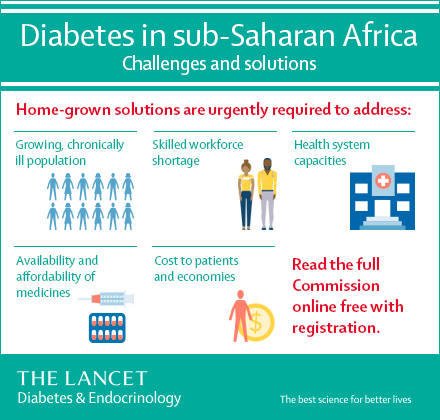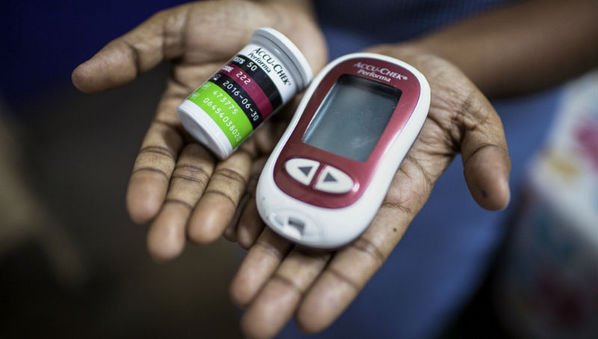[CAPE TOWN] The costs and complications of diabetes could overwhelm healthcare systems in Sub-Saharan Africa and reach US$59.3 billion by 2030 if rates double, according to the Lancet Diabetes and Endocrinology Commission.
Launched in London this month (5 July), the commission involved over 70 international experts and reveals key messages for promoting a coordinated response to diabetes to reach UN and Sustainable Development Goals (SDGs) on noncommunicable diseases (NCDs).
“NCDs and cardiovascular disease haven’t been a priority because the development agenda focus has been on infectious disease and child health.”
Margot McCumisky
“NCDs and cardiovascular disease haven’t been a priority because the development agenda focus has been on infectious disease and child health. However, in the background NCDs have shown themselves to be important contributors to morbidity and mortality,” says study co-author Justine Davies, a professor of global health at the King’s College London, United Kingdom.
“What we are looking at is the current state of knowledge in the region and what we have to do to achieve the new SDGs,” she adds.
Using diabetes as a benchmark for cardiovascular disease risk factors and the WHO, UN and survey data, the commission aimed to establish the current burden of diabetes and the challenges it places on healthcare systems, as well as the economic cost of care.
Results reveal gaps in care at nearly every step of the diabetes care continuum, which leave around 50 per cent of patients with diabetes undiagnosed. Findings also reveal a critical lack of diagnostic and treatment equipment, lack of knowledge about the disease among healthcare providers, limited access to healthcare facilities and delayed diagnosis and treatment leading to complications and need for more costly care.

According to the commission, the current economic cost of diabetes in Sub-Saharan Africa is US$19.5 billion or one per cent of gross domestic product (GDP). However, it estimates this could increase to US$35.3 billion (one per cent of the GDP) in 2030 if rates stay the same, US$47.3 billion (1 per cent of the GDP) if rates follow projected increases, or US$59.3 billion (2 per cent of the GDP) if rates double.
Rapidly increasing GDP in most Sub-Saharan African countries is making people wealthier and more susceptible to diabetes due to changes in diet, increases in sedentary behaviour and obesity. In South Africa, one of the region’s wealthier countries, diabetes is the fifth leading cause of death according to 2012 figures from the WHO.
Margot McCumisky, national director of Diabetes South Africa, a member of the International Diabetes Federation, says that in addition to a lack of resources and knowledge, a negative perception of people with diabetes contributes to inadequate care.
